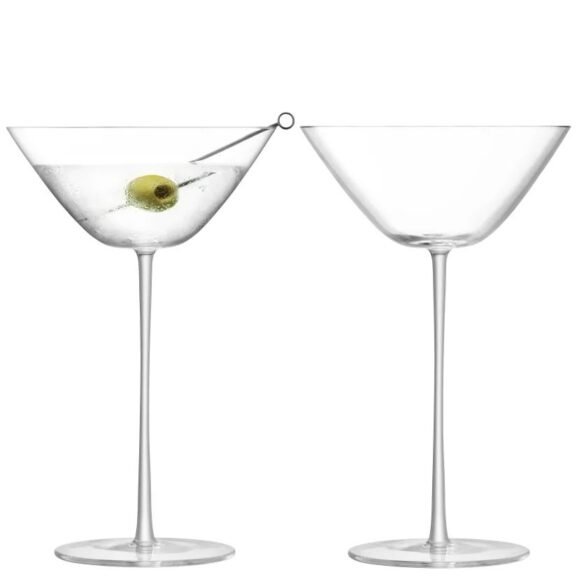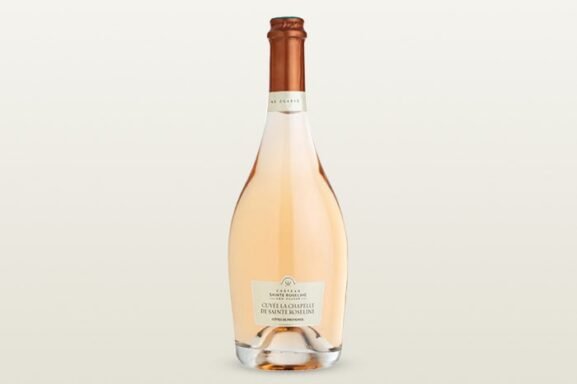Dunk Your Italian Cookies in Wine
All across Italy, from Rome and Tuscany to Calabria, there’s a longstanding tradition of serving slightly sweet, crisp cookies alongside—and dunked in—wine.
The origins of these cookie-and-wine combos are not precisely documented, but recipes generally go back generations. Most boast a purposefully dry texture, allowing them to last for up to several weeks in an airtight container without going stale. That’s where the glass of wine comes in: To soften up these cookies, they are traditionally dunked in red wine.
You May Also Like: TikTok Is Mixing Wine with Milk. It Might Not Be a Bad Thing.
Though you rarely see Americans soaking cookies in beverages other than milk, this age-old Italian dessert has been slowly gaining traction stateside in recent years. Recipes for various regional riffs have been cropping up in online food publications. A hilarious Tiktok recipe reel by @the_pastaqueen featuring one version of “red wine cookies,” posted in 2021, has notched more than 35,000 views. And, in September, Giada de Laurentiis posted a video of herself on X, formerly known as Twitter, enjoying the Tuscan take on the treat.
That’s all the proof we need to begin embracing this tradition. Whether you want to pick up some cookies from an Italian bakery or make your own, here’s how to get started.
In the shop
Wine Enthusiast Somm Universal Handblown Wine Glass
In Stock | $34.99
A Defining Texture
Again, it’s unclear when dunking cookies in wine—perhaps the Italian predecessor to Oreos in milk?—became common practice. However, most of these regional specialties bear at least some degree of textural resemblance to crisp and dense biscotti, derived from the Latin “bis” (twice) and “coctum” (baked). While modern baking practices allow for biscotti to be shaped individually before hitting the oven, back in the Roman days, these biscuits were first baked as a loaf, then sliced and toasted to achieve their characteristic hardness. This made them ideal for long-term preservation, a necessity during the extended journeys and conquests of the Roman legions.
Most of the cookies Italians dip into wine boast a similarly hard touch and extended shelf-life, though specific ingredients differ from province to province and baker to baker.
What Are the Best Wines for Dunking Cookies?
“The best thing about Italy is that everything is so regionally specific, so if you go to Emilia-Romagna, you’ll eat biscotti,” says Leigh Omilinsky, pastry chef of Daisies in Chicago. “However, if you go to Tuscany, you get cantucci.”
Both ubiquitous biscotti and its almond-studded Tuscan brethren are traditionally paired with vin santo, a viscous dessert wine typically made from white grapes like Trebbiano and Malvasia. In fact, the combo of “cantucci e vin santo” is so popular in Tuscany, it’s offered at the end of just about any meal, “be it at home or at a restaurant,” according to an article in The Florentine, an English-language magazine published in Florence.
Vin santo is also one of the preferred cookie-dunking wines in the neighboring province of Umbria. Locals dip their tozzetti cookies, which add hazelnuts and aniseed to the almonds typically found in Tuscan cantucci, in local dessert wines like vin santo, or Sagrantino passito, a sweet wine made from semi-dried grapes.
For those partial to chocolate biscotti, writer and wine educator Laura Donadoni recommends pairing them with Barolo Chinato, a wine made in the Barolo appellation enriched with herbs, spices and bittering agents. Originally used for medicinal purposes, Barolo Chinato is often consumed as vin brulé, a warm mulled wine-style digestif. The balance of sweet and bitter flavors stands up well against rich, chocolatey desserts.
You May Also Like: Sweet, Sparkling or Dry: Our Top 10 Moscatos for Every Palate
Dessert wines and digestifs aren’t the only wines that go well with these dippable Italian cookies. Donadoni tends to adhere to a “what grows together, goes together” ethos, matching each regional cookie to a local wine from the area. For instance, in Piedmont and Valle d’Aosta, torcetti—twisted cookies made from butter, flour, sugar, water and yeast that are a sweeter variation of the traditional breadsticks called grissini—are best enjoyed with sweet sparkling wines like Moscato d’Asti.
Much of what makes a match work comes down to the sugar levels in the wines and the cookies. These pairings tend to work better with variations that boast a hint of saltiness or a nutty profile, says Joe Campanale, co-owner of Fausto, LaLou and Bar Vinazo in Brooklyn. “Since many dessert wines are quite sweet, pairing them with very sweet cookies can be a sugar overload,” he says.
This is why slightly drier Moscato and Prosecco are better dips for the Lazian Christmas staple, brutti ma buoni (translating to “ugly but good”), a crunchy mix egg whites, sugar, ground almonds or hazelnuts, vanilla and salt, says wine consultant and author Cathy Mantuano.

The Ultimate Wine and Cookie Situation
Another one of Mantuano’s favorite wine-soaked cookies are ciambelline al vino rosso, a version of Lazio’s ring-shaped ciambelline al vino that are crispy on the outside and chewy on the inside. The dough includes equal amounts of red wine and olive oil.
“They are absolutely addictive with wine,” says Mantuano. “One of the first stops we make when we get to Rome is to Forno Campo de’ Fiori to get a bag.”
As the name hints, both versions of ciambelline al vino contain wine in the dough. Made with either white or red wine, extra virgin olive oil and flavored with anise seeds, these crunchy cookies are excellently paired with a sweet and raisin-y Malvasia del Lazio passito, according to Donadoni.
You May Also Like: The Best Montepulciano d’Abruzzo Wines to Drink Right Now
However—great news for those who dislike sweet wines—these wine-infused biscuits also go well with dry reds. To soften up ciambelline, admirers dunk them in local Cesanese del Piglio, slightly tannic wines with fruity aroma such, or Montepulciano d’Abruzzo, which boasts a somewhat similar structure and comparable licorice-like notes that complement the anise in most recipes.
But, like all wine pairings, finding the right match depends upon the individual components and ingredients in each dish. And there are myriad directions one can take it.
At Elvira, a Roman osteria in San Diego, chef-partner Cesarina Mezzoni has been serving an occasional, off-menu special of the classic combo with a buckwheat- and cherry-flavored ciambelline with a glass of Brunello di Montalcino. It’s been a hit with customers.
The robust and complex Tuscan red’s ripe fruit, spice and earthy aromas complement the “earthiness of the buckwheat and the tartness of sour cherries, creating a harmonious balance,” says Mezzoni. “Additionally, the tannic structure helps cleanse the palate after enjoying the ciambelline, preparing it for the next bite and contributing to a sense of fullness and satisfaction.”
How to Make Ciambelline al Vino with Buckwheat and Sour Cherries
Recipe by Cesarina Mezzoni, executive chef and partner of Cesarina and Elvira
- 4 ½ cups all-purpose flour
- ⅓ cup buckwheat flour
- ¾ granulated sugar, plus more for rolling cookies
- 1 tablespoon baking powder
- ½ teaspoon baking soda
- ½ teaspoon salt
- 1 teaspoon anise seeds, whole
- ½ cup dried sour cherries, roughly chopped
- ¾ cup olive oil
- 1 cup red wine
Step 1
Using a stand mixer with the paddle attachment combine the flour, buckwheat flour, ¾ cup sugar, baking powder, baking soda, salt, anise seeds and sour cherries. Mix until combined.
Step 2
Slowly add the olive oil and wine. Mix until dough is formed.
Step 3
Pre-heat the oven to 350°F.
Step 4
Using plastic wrap, roll the dough into a cylinder and let it rest for 15 minutes.
Step 5
Slice the dough into two-inch rounds. Roll out with your hand until it’s slightly thicker than your finger and form each cookie into a little ring. Dip each one into granulated sugar and bake on a lined sheet pan for 20 minutes or until golden brown.

in stock
Vino-Voyage TSA-Approved 6-Bottle Wine Suitcase
In Stock | $199.00
Published: May 9, 2024

